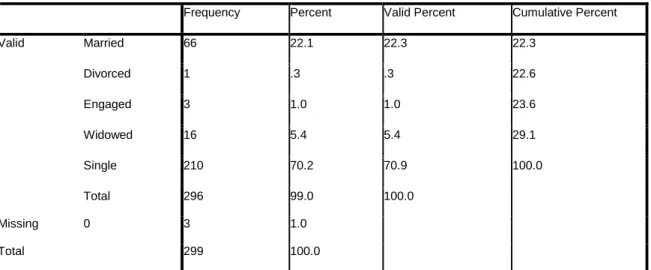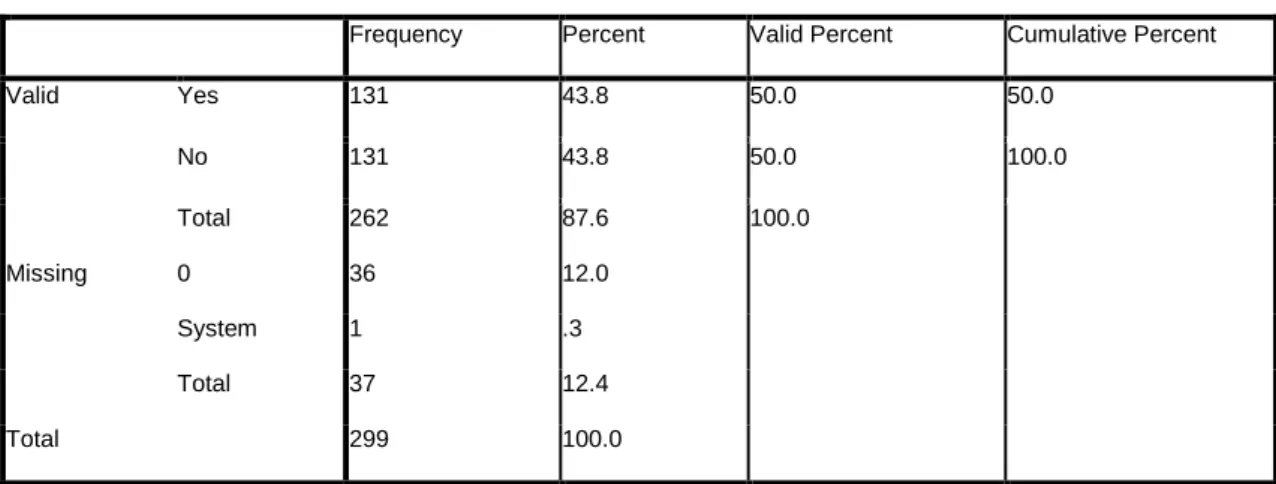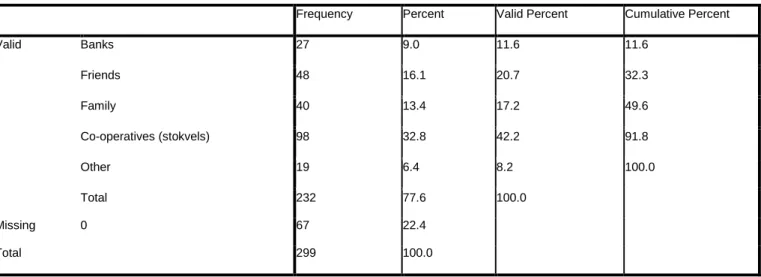Introduction
According to the United Nations report UNAIDS (2000), although HIV/AIDS infection is a global problem, the epicenter of the disease is in Africa. AIDS affects sections of the population that were previously healthy; therefore, the number of people requiring health services is increasing, with serious implications for the health sector (Leblanc et al., 1997).
Motivation for the study
HIV and AIDS are already putting a pause on economic growth in the worst affected areas. A report from the Department of Health (2003) shows that a large sum of health expenditure will go to HIV and AIDS.
Statement of the problem
About thirty-four percent (34%) are less than 5 and seventeen percent (17%) are more than ten percent (10%) of households. Another twenty-one percent (21%) of respondents do not agree that some of their family members died of HIV/AIDS and only five percent (5%) disagree.
Objectives of the study and hypotheses of the study
Research methodology
Organization of the study
Introduction
Their answers are likely to depend on the assets available to the household; the economic context; past migration history and contemporary rural links; the prevalence of disease and whether the household itself is affected, affected or unaffected; the social/ethnic group to which the household belongs, with its associated patterns of kinship, marriage, access to land, inheritance etc.; the nature of associational life in the settlement in which the household lives and beyond; the capacity of government to deliver services and the activities of NGOs. According to UNAIDS (1999), households adopt a wide variety of strategies to mitigate the effects of HIV/AIDS.
Types of household coping strategies
Households that have higher incomes or better alternative resources are better able to cope with the impact of HIV/AIDS. Poor and small families who have no room to absorb the additional costs of HIV disease are most at risk from the epidemic.
Household coping strategies aimed at improving food security
They lack the resources, especially livestock, that influence the choice of later coping strategies, such as borrowing or hiring labor. Sauerborn et al., (1996) indicate that this survival strategy is applied when the households at risk have fallen into a disaster.
Household coping strategies aimed to raise income
- Income diversification
- Sale of agricultural produce and use of savings
- Loans
- Sale of assets
- The role of the extended family
Tibaijuka (1997) in Kagera Tanzania reports that households sold bananas (their staple food) in desperation to raise money to cover medical costs. The same studies also indicate that households use savings to raise money to cover health and funeral expenses.
Household coping strategies aimed at alleviating the loss of labour
- Hiring labour and draught power
- Changing household crop production and substitution of crops
- Decreasing area cultivated
- Length of the working day
Labor was hired to meet the needs of the most labour-intensive activities, namely land preparation, weeding and harvesting. Prolonged interruption of the labor supply can also affect important activities such as land preparation or maintenance of irrigation systems which in turn affect future production.
Most common coping strategies
- Policy implications on strengthening the household’s coping capacity
- Improving agricultural production
- Promotion of existing labour-and capital-saving technologies
- Technology development for resource-deprived households in the small-
- Strengthening draught power and labour-sharing clubs
- Implications of human resource losses
Household capacity for agricultural production can be enhanced by improving their access to labour, land, capital, traction power and management skills, promoting the use of existing labour- and capital-saving technologies, and developing technologies that can make optimal use of the limited resources available. Technology that makes optimal use of available resources is already available and can be adopted by these resource-poor farming systems.
Income-generation and diversification of source of income
- Improve household’s income-generating capacities
- Promotion of income diversification
- Schemes to finance health services
To reflect the changes in the rural environment, all formal and informal rural development institutions need to review their human resource programs and policies. It is necessary to plan for the loss of knowledge, managerial and professional workers and to introduce more skills at all levels so that agricultural production in rural areas does not suffer excessively.
Reducing demands on women’s labour
Other options are non-agricultural sources of income, particularly home-based income-generating activities and small trading activities (after thorough analysis). Given the low success rate of Income Generating Projects (IGP) in many countries, these activities need to be promoted with considerable caution, planning and realism.
Improving the welfare of children in need
Community responses to HIV/AIDS
- Informal grassroots community organizations
- Social support groups
- Indigenous savings associations
- Indigenous emergency assistance associations
- Self-help groups of people with HIV/AIDS
They offer some financial security in case of death and also cover some of their members' other social needs. Grain saving schemes have a very long history in rural Africa and have been used for many years to meet the needs of people in the community.
Formal community-based organizations
- Child and orphan support
- Income-generating projects (IGPs)
The 1998 evaluation of Action Aid's strategies for community-based programs in Action in Uganda and Malawi also provided no information on the costs or cost-effectiveness of community-based support activities (UNAIDS, 1999). The review found that orphanages are unlikely to be financially sustainable due to the heavy and long-term burden they place on them. The goal of the COPE intervention is to mobilize community action to mitigate the impact of HIV/AIDS on families and children.
Evaluation of income generating projects by Asingwire and Muhangi (1998) in Uganda in 1998 did not document any cost and effectiveness of the IGPs.
Treatment and home-based care programmes
In another study, Gilks et al., (1998) also concluded that hospital-run home-based care units were not cost-effective, as they were expensive and could not cover all those in need. UNAIDS (1999) points out that many local home-based care programs take the form of medical and nursing care, material assistance, and emotional, spiritual and social support. Another major obstacle is when the number of people requiring home-based care increases to levels that exceed the capacity of local home-based care.
In comparison, the cost of home care programs of the Catholic Diocese of Copper belt in Zambia is modest in relation to the number of beneficiaries.
Changes in cultural norms and values
The largest single item was welfare support (food, clothing, blankets, bedding) for families, which accounted for 39% of the money spent, followed by drugs and equipment, which accounted for 21% (Blinkhoff et al. 1999). You can't afford to do that now or you won't have any food” - Dr. D. Kabatesi, director of the Theta AIDS Education Project (McNeil, 1999). Instead, ritual purification now involves putting a pearl ring around the widow's waist and smearing her with flour.
Some communities have made efforts to protect the property and legacies of widows and children from appropriation by the deceased husband's family, working with community leaders.
Policy implications on community coping responses
- Enhancing and mobilizing community capacities
HIV prevention efforts should be an integral part of these strategies if the emphasis is on openness and community recognition and ownership of the problem. Some policy options emerge from the literature review, which can be taken up to strengthen the capacity of local communities to cope with HIV/AIDS. The pandemic is putting enormous pressure on the extended family's traditional coping mechanisms and is steadily eroding the extended family's ability to care for those suffering from or left behind by HIV/AIDS.
According to a 1997 study by McKerrow in Zimbabwe on the willingness of communities to absorb orphaned children, families are more willing to care for orphans if there is some form of support.
Strengthening community responses
It is therefore important that programs and policies aim to improve and strengthen the traditional coping responses of extended families and their communities (UNAIDS, 1999). According to UNAIDS (1999), NGOs and CBOs can significantly increase the effects of their resources by facilitating and strengthening communities' autonomous AIDS responses, rather than trying to provide direct service. However, before any intervention is undertaken, an external change agent (be it a government or an NGO) must conduct a thorough situation assessment to identify community needs and map existing responses.
The change agent should build on existing responses to the crisis, seeking to strengthen rather than replace or eliminate initiatives already under way.
Mitigation support
Affected households that fail to survive due to the youth of the head of household or the lack of land or other basic assets need emergency assistance to avoid falling into permanent poverty. According to Donahue (1998), communities are best placed to identify needy families, vulnerable children and orphans. Communities are also best placed to monitor and interact with children, monitor their activities and prevent abuse of child labor.
Support is most effective when channeled to the poorest families and orphans to prevent them from falling into permanent poverty.
Conclusion
- Introduction
- The research design
- Research hypotheses
- Unit of analysis
- Method of data collection
- Research participants for the focus group (sample)
- Survey research participants
- Data collection methods (survey)
- Data analysis from the survey (quantitative)
- Conclusion
This chapter will deal with data collection and the method that will be used in collecting data.
Introduction
Qualitative Question and Results from the Focus Group
- Knowledge of AIDS and causes of AIDS from the focus group
- Risky behaviour
- How AIDS affects people
- Copying strategies
- Government action
- Future generation
Quantitative results
Conclusion
The role of the National Government
In 2000, the National Integrated Plan formalized a multi-sectoral approach and set up an accompanying financing strategy. A 2002 study by the Center for Health Systems Research and Development provides the best overview of the evolution of the South African response to HIV/AIDS towards a more entrenched multisectoral approach. According to the USAID report (2002), the challenge is to convince and encourage ministries outside health care to make the fight against HIV/AIDS a core activity.
Thus, there appears to be general agreement that the national government's response to HIV/AIDS must include a focused effort to develop comprehensive planning and.
The role of the Provincial Government
According to Hickey (2002), this has encouraged the Treasury and the Department of Health to explore new funding mechanisms that transfer HIV/AIDS funding to the provinces with less restrictions and tighter controls, which makes it possible. Provinces can finance such programs (outside of NIP programs) by allocating funds from their own provincial budgets. Idasa analyzed provincial funding sources for HIV/AIDS programs in the health, education and social development sectors.
However, the research is limited to policies, associated budgets and funding mechanisms, and does not address the political and management issues associated with provincial HIV/AIDS programs not covered by the NIP.
The role of the Local Government
The results of the study reveal that there is a negative economic impact of HIV/AIDS in KwaDlangezwa. The impact of HIV/AIDS on smallholder production in the Gweru/Shurugwi districts of Zimbabwe and the current recommended. Costs and effectiveness of home-based care for people living with HIV/AIDS in Zambia, Lusaka.
The study was explained to us as Economic Impact of HIV/AIDS on Rural Households in KwaDlangezwa.
Findings
The study on the Economic Impact of HIV/AIDS in KwaDlangezwa found that there are family members who find it difficult to cope with HIV-infected family members.
Policy recommendations
They reveal that HIV/AIDS has a negative impact on household income, family size, wealth, savings and spending. The respondents also believe that the government is not taking care of the HIV/AIDS pandemic sufficiently. The Impacts of HIV/AIDS on Agricultural Systems and Livelihoods in Rural Uganda, Tanzania and Zambia, FAO, Rome.
Building Capacity for People Living with HIV/AIDS', 11th International AIDS Conference, Vancouver (July 7–12). The Socio-Economic Impact of HIV/AIDS on Communal Farming Systems in Zimbabwe, Zimbabwe Farmers Union, Friedrich Ebert Stiftung Economic Advisory Project, Working Paper 19, Harare. Ma: I think the government is not addressing the issue of the HIV/AIDS pandemic enough, they could do more.









